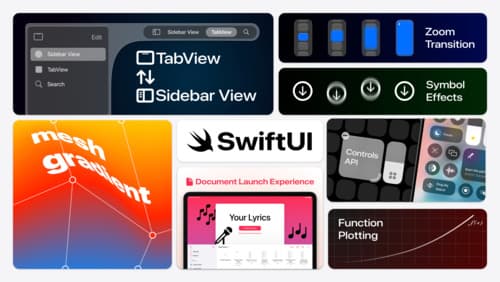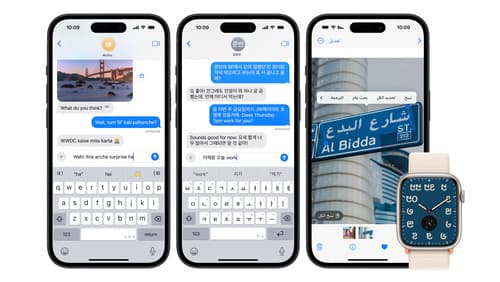How to provide keyboard accessibility support
Asked on 2024-07-27
1 search
To provide keyboard accessibility support in your app, you can leverage several techniques and tools discussed in the WWDC sessions. Here are some key points:
-
Accessibility Elements:
- SwiftUI creates accessibility elements as one of its primary outputs. These elements represent one or more views and provide attributes to describe the contents of a view and actions which expose how a view can be interacted with from taps to complex gestures. Accessibility technologies like VoiceOver, Voice Control, and Switch Control use these elements to present and interact with content in your app. Catch up on accessibility in SwiftUI
-
Combining Elements:
- To simplify navigation, you can combine multiple elements into a single accessibility element using the
accessibilityElement(children: .combine)modifier. This can make it easier for users to navigate complex views. Catch up on accessibility in SwiftUI
- To simplify navigation, you can combine multiple elements into a single accessibility element using the
-
Hover Effects and Keyboard Support:
- SwiftUI provides a new closure-based hover effect modifier that can be used to control how a view looks as it transitions between active and inactive states. This can be coordinated with keyboard interactions to provide a seamless experience. What’s new in SwiftUI
-
Custom Actions:
- You can define custom actions for accessibility elements to provide more control over how users interact with your app using a keyboard. This can be particularly useful for complex interactions that are not easily handled by default accessibility actions. Catch up on accessibility in SwiftUI
-
Voice Input:
- For additional flexibility, you can use voice input for text fields, which can be particularly useful for users who rely on voice control. The Web Speech API can be used to handle voice input and output, providing a more accessible experience. Optimize for the spatial web
For a more detailed exploration of these techniques, you can refer to the following sessions:
These sessions provide comprehensive guidance on making your app more accessible and improving the user experience for all users.

Get started with Writing Tools
Learn how Writing Tools help users proofread, rewrite, and transform text in your app. Get the details on how Writing Tools interact with your app so users can refine what they have written in any text view. Understand how text is retrieved and processed, and how to support Writing Tools in custom text views.

What’s new in SwiftUI
Learn how you can use SwiftUI to build great apps for any Apple platform. Explore a fresh new look and feel for tabs and documents on iPadOS. Improve your window management with new windowing APIs, and gain more control over immersive spaces and volumes in your visionOS apps. We’ll also take you through other exciting refinements that help you make expressive charts, customize and layout text, and so much more.

Build multilingual-ready apps
Ensure your app works properly and effectively for multilingual users. Learn best practices for text input, display, search, and formatting. Get details on typing in multiple languages without switching between keyboards. And find out how the latest advances in the String Catalog can make localization even easier.
